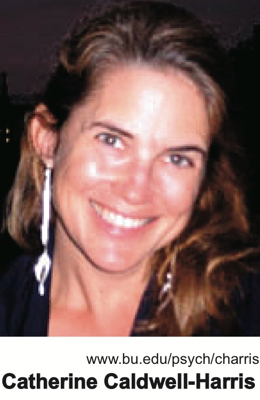Rascals case in brief
In the beginning, in 1989, more than 90 children at the Little Rascals Day Care Center in Edenton, North Carolina, accused a total of 20 adults with 429 instances of sexual abuse over a three-year period. It may have all begun with one parent’s complaint about punishment given her child.
Among the alleged perpetrators: the sheriff and mayor. But prosecutors would charge only Robin Byrum, Darlene Harris, Elizabeth “Betsy” Kelly, Robert “Bob” Kelly, Willard Scott Privott, Shelley Stone and Dawn Wilson – the Edenton 7.
Along with sodomy and beatings, allegations included a baby killed with a handgun, a child being hung upside down from a tree and being set on fire and countless other fantastic incidents involving spaceships, hot air balloons, pirate ships and trained sharks.
By the time prosecutors dropped the last charges in 1997, Little Rascals had become North Carolina’s longest and most costly criminal trial. Prosecutors kept defendants jailed in hopes at least one would turn against their supposed co-conspirators. Remarkably, none did. Another shameful record: Five defendants had to wait longer to face their accusers in court than anyone else in North Carolina history.
Between 1991 and 1997, Ofra Bikel produced three extraordinary episodes on the Little Rascals case for the PBS series “Frontline.” Although “Innocence Lost” did not deter prosecutors, it exposed their tactics and fostered nationwide skepticism and dismay.
With each passing year, the absurdity of the Little Rascals charges has become more obvious. But no admission of error has ever come from prosecutors, police, interviewers or parents. This site is devoted to the issues raised by this case.
On Facebook
Click for earlier Facebook posts archived on this site
Click to go to
Today’s random selection from the Little Rascals Day Care archives….
Click for earlier Facebook posts archived on this site
Click to go to
Today’s random selection from the Little Rascals Day Care archives….
Exoneration depends on catching eye of media
 Oct. 3, 2012
Oct. 3, 2012
“You can have all the evidence in the world, and that’s still only 50 percent of the fight. The other 50 percent is media.
“You have to get the media to pay attention. If not, they’ll sweep it under the rug and keep going.”
– Damien Echols of the West Memphis Three, analyzing (in the New York Times) his continuing struggle for exoneration.
If you’re in the media – reporter, editor, blogger, author, moviemaker, aerial advertising entrepreneur – and ready to pay attention to the Edenton Seven, let me hear from you.
Judith Abbott’s fantasies of Charles Manson
Sept. 9, 2013
“According to court records, one of the state-recommended therapists, Judith Abbott, showed a five-year-old girl drawings of satanic symbols (a horned mask, inverted crosses and a peace symbol described on the drawing as the ‘Cross of Nero’) in an effort to uncover instances of devil worship. ‘Mr. Bob’ was wearing one of those, the child said, according to a note Abbott wrote on the drawing of the mask.
“The same child had begun her therapy complaining that Mr. Bob gave hard spankings; after biweekly sessions for six months she was ‘remembering,’ according to Abbott’s typed therapy notes, ‘oral penetration by a penis, vaginal penetration by a brown felt-tipped pen and witnessing the murder of human babies.’
“Abbott explains the delay in eliciting this material by saying that the children had been terrified into silence. ‘When you break down the child, you own their spirit.’ she says. ‘It’s like Helter Skelter, Charles Manson.’ ”
– From “The Demons of Edenton” by Lisa Scheer and Edward Cone in Elle magazine (November 1993) Download article here
A proven effective way to “break down the child”: Subject her to six months of Abbott’s biweekly “therapy” sessions.
Parents’ gullibility ‘grounded in anxiety’
Nov. 25, 2011
“In the prototypical witch hunts in Europe and in the Massachusetts colony, the accused were often scapegoats for some calamity – disease, bad harvests, the birth of a deformed child.
 “In the witch hunts of the ’80s, there was no such injury to be avenged or repaired. There was, however, a psychological need to be fulfilled. Our willingness to believe in ritual abuse was grounded in anxiety about putting children in day care at a time when mothers were entering the work force in unprecedented numbers.
“In the witch hunts of the ’80s, there was no such injury to be avenged or repaired. There was, however, a psychological need to be fulfilled. Our willingness to believe in ritual abuse was grounded in anxiety about putting children in day care at a time when mothers were entering the work force in unprecedented numbers.
“It was as though there were some dark, self-defeating relief in trading niggling everyday doubts about our children’s care for our absolute worst fears – for a story with monsters, not just human beings who didn’t always treat our kids exactly as we would like; for a fate so horrific and bizarre that no parent, no matter how vigilant, could have ever prevented it.”
– Margaret Talbot, writing in The New York Times Magazine, Jan. 7, 2001
50 students now know the facts
 Oct. 28, 2013
Oct. 28, 2013
“What was surprising was that in a class of 50 students, none had heard of the day care allegations of the 1980s.”
– From a note from Catherine Caldwell-Harris, associate professor of psychology, Boston University
Well, that’s a bracing dose of reality, isn’t it? But thanks to Dr. Caldwell-Harris, those students in her developmental psychology class now have an understanding of the moral panic. Here’s her lesson plan, which she doesn’t mind being borrowed, along with her comments on how students responded.
Maybe the current generation of academics sees clearly what many of their predecessors so horribly misjudged?











0 CommentsComment on Facebook